Magnetotherapy is widely used in the treatment and prevention of many diseases. However, despite all the effectiveness of this physiotherapy, it also has a number of contraindications. Therefore, the sessions, their number and method of carrying out should be prescribed by the attending physician. The procedures can be carried out not only in a hospital, but also at home. There are both stationary and portable devices, in some cases special magnetic accessories are used.
What is magnetotherapy?
Magnetotherapy is a physiotherapy method used in the conservative treatment of various diseases and during the rehabilitation period after surgical interventions on the musculoskeletal system. The mechanism of action is based on the healing effect of the magnetic field, which improves blood supply to the spinal cord and brain, oxygen saturation of the heart. This leads to an increase in blood sugar levels, stabilization of blood pressure, and normalization of the function of internal organs.
For therapeutic purposes, an alternating or constant magnetic field of low and high frequency is used. According to doctors, an alternating field has a great therapeutic effect. As a rule, low frequency alternating magnetic fields are used.
The magnetic field provokes the formation of an eddy electric current in the tissues, the intensity of which depends on the magnitude of the magnetic field induction and the electrical conductivity of biomaterials. The best conductors of electricity are cerebrospinal fluid and blood serum, therefore these structures are most susceptible to magnetism.
Magnetotherapy affects the human body unevenly. First of all, nerve cells react, after the internal glands and organs of perception. Further, the effect is on the heart, blood vessels, muscles and digestive organs. The last in susceptibility are the lungs and the skeleton.
As a rule, physiotherapy with a magnet does not cause a pronounced negative effect, but there may be individual reactions to the procedure. Side effects include nausea and dizziness, and they are temporary and disappear 30-50 minutes after therapy.
Magnetotherapy has the following advantages:
- simplicity;
- availability;
- security;
- painlessness;
- lack of chemical action on the skin;
- the possibility of reducing the dosage of medicines.
Magnetic therapy treatment
Magnetotherapy has the following effects:
- stimulates fat metabolism (metabolism), thereby reducing the amount of fat reserves;
- improves blood supply to tissues, because the magnetic field acts on iron in the blood, and hemoglobin begins to better capture oxygen;
- contributes to the contraction of the vessels of the lymphatic system, due to which toxins are removed from the body;
- reduces puffiness by removing excess water;
- improves the nerve conduction of organs and tissues, thereby they work more efficiently;
- normalizes the function of the nervous system;
- eases the condition of organs prone to chronic inflammatory processes;
- accelerates the recovery of damaged tissues and wounds;
- relieves pain syndrome.
To get the desired result, physiotherapy is carried out in courses. Their duration, volume and frequency of impacts are determined by the attending physician.

Indications
The magnet therapy is established for various diseases.
| Group | List of diseases |
|---|---|
| Cardiovascular pathology |
|
| Diseases of the nervous system |
|
| Vascular disease |
|
| Pathology of the musculoskeletal system |
|
| Pathology of the gastrointestinal tract |
|
| Diseases of the bronchi and lungs |
|
| Otolaryngological diseases |
|
| Problems with the urinary system |
|
| Sexual disorders | In urology:
In gynecology:
|
| Skin pathologies |
|
Magnetotherapy can be used after surgery for the treatment and prevention of adhesions. It also helps to improve immunity.

Contraindications
Contraindications have been established for magnetic therapy, as well as for other physiotherapy procedures. They are divided into absolute and relative.
Before prescribing magnetotherapy, the doctor should assess the general condition of the patient, age, the presence of acute and chronic diseases. The dynamics of pathological processes is important. The specialist pays attention to the results of additional examinations and previous therapy.
Absolute contraindications include:
- violation of normal blood clotting;
- an installed pacemaker (a magnetic field can disrupt its functioning);
- active form of tuberculosis;
- decompensated cardiovascular diseases;
- the presence of joint endoprostheses;
- malignant tumors;
- acute hepatic or renal failure;
- severe mental illness (epilepsy, schizophrenia, etc.);
- stage 3 hypertension;
- increased thyroid function;
- purulent inflammations (carbuncles, abscesses, phlegmon, pyoderma, panaritium);
- fever;
- acute period of chronic diseases;
- menstrual bleeding.
Hypotonic disease is considered a relative contraindication. Magnetotherapy is also prohibited for children under two years of age.
Devices
Magnetotherapy can be performed with various devices. Allocate:
- stationary devices;
- portable (usually external, internal are used in gynecology);
- magnetic accessories.
Stationary is used for severe pathologies. Portable ones are used at home to treat shallow processes. As a preventive measure, magnet jewelry is worn.
Stationary devices
Usually stationary devices are a mobile cabinet with a built-in graphic display. Using a computer, a treatment protocol is set, from which a command is sent to additional devices and components.
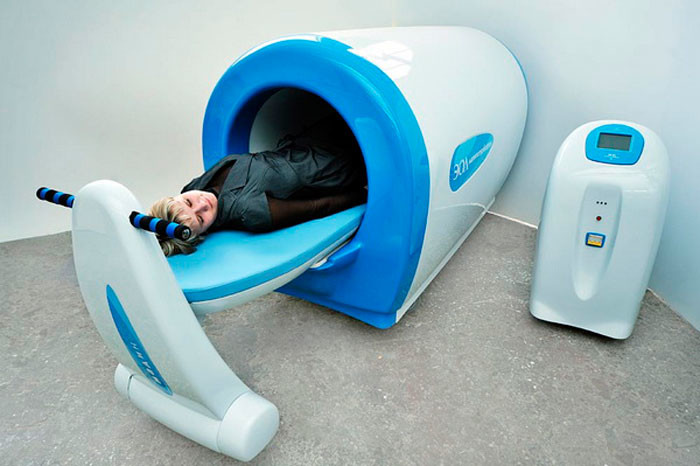
Stationary magnetic therapy apparatus
The computer is equipped with a frequency control for magnetic fields. It ranges from 1 to 100 Hz. The power of the equipment can be changed, which varies from 1 to 100 Gauss.
Additional equipment is also used:
| Device | Description | Image |
|---|---|---|
| Local emitters | Allows you to focus the effect of the magnetic field on specific areas of the body | 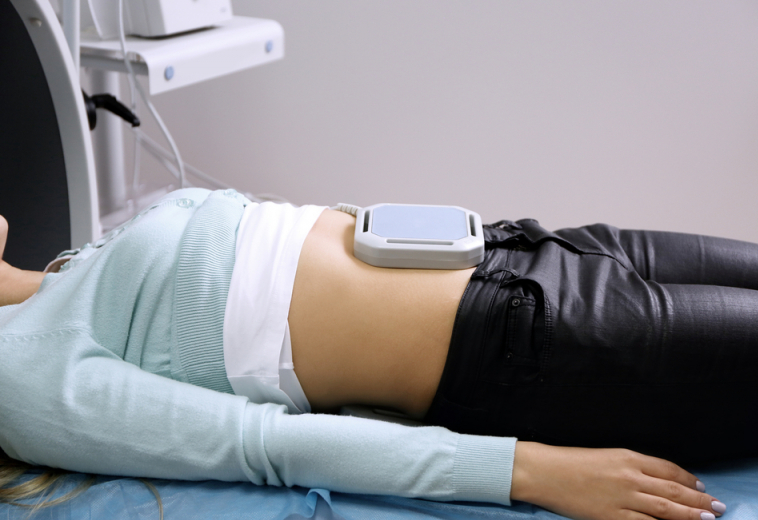 |
| Solenoids | They are usually used to treat limbs. They act through the formation of a circular magnetic field. The procedure using this type of device does not require much time and special preparation. | 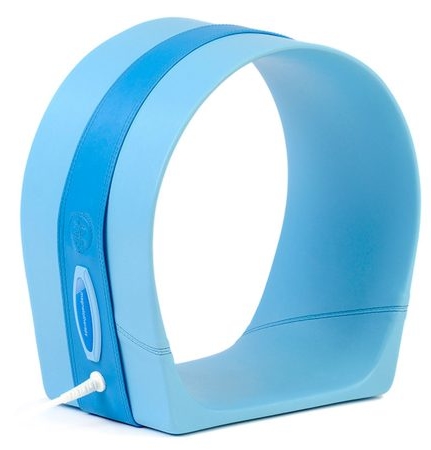 |
| Movable hoop | By analogy with solenoids, they allow to exert a magnetic effect only on a certain part of the body. Designed to treat pathologies of internal organs without affecting the entire body. The couch is able to move during the procedure, due to which the therapy will proceed with variable effects on certain areas | 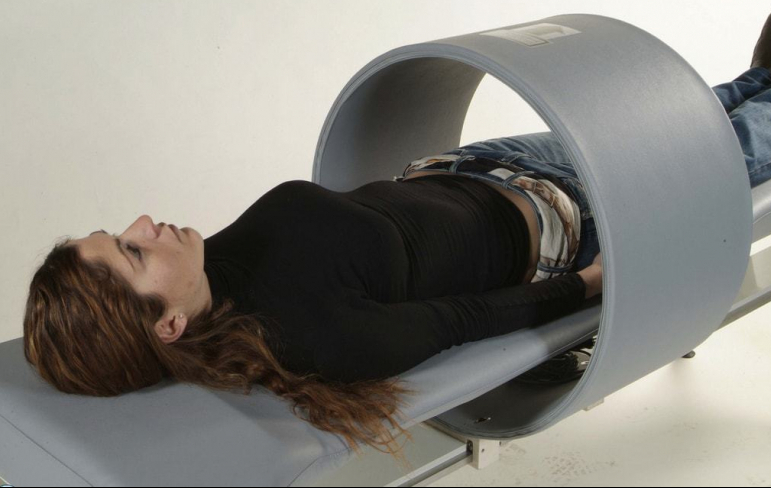 |
Local exposure to a magnetic field is much easier for the patient to bear. When preparing for the procedure, it is recommended to drink a glass of mineral water in order to improve the processes of cleansing cells in the body.
Portable devices
Portable magnetotherapy devices are easy to use. To provide a therapeutic effect, special devices are applied to the affected area of the body.
Magnetic portable devices are capable of performing the following therapeutic actions:
- relieve inflammation;
- stop pain;
- eliminate swelling;
- calm down.
| Device name | Description | Indications for use | Photo |
|---|---|---|---|
| Magofon-01 | Has vibroacoustic vibration. The range is unique, using a low-frequency alternating magnetic field. Technical characteristics of the device:
| Treatment of various diseases, for example:
Magofon-01, in comparison with other portable devices, has a stronger analgesic and anti-edema effect. It is especially effective in the treatment of vasomotor rhinitis and nonsuppurative sinusitis. | 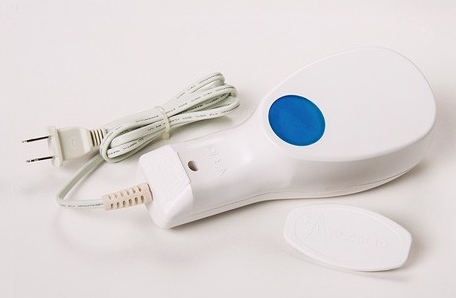 |
| AMnp-01 | This device has a small size - 114x148x45 mm. The weight of AMPnp-01 is about 900 g, and in terms of power it is inferior to Magofon-01 and is 30 W. It is powered by a conventional 220 V AC network. The time of continuous operation is 20 minutes, after which a twenty minute break is required. Has special straps for attaching to a place on the body where you need to have a therapeutic effect | Diseases of the venous system (varicose veins), musculoskeletal system and hypertension |  |
| Alimp-1 | This therapeutic device has a pulsed effect. It consists of several parts, which include various solenoids and an electronic unit. | Pathological disorders:
| 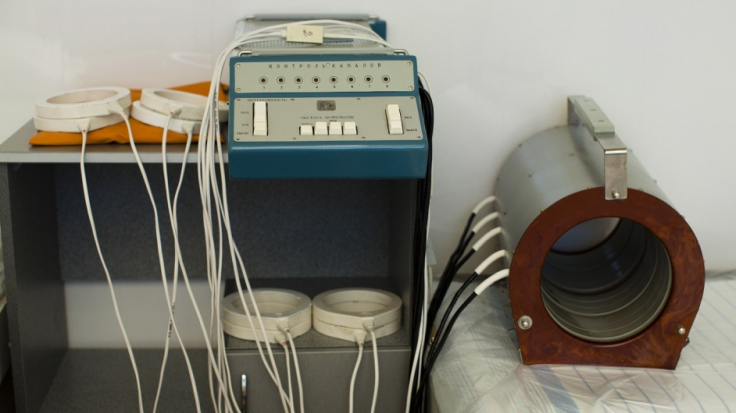 |
| Almag-01 | The kit is a block of four coils that are wrapped around the body area. Almag-01 is lighter than the first two models: it weighs 620 g and its power is 35 W. But it is inferior to Magofon-01 in terms of continuous work time. It is 20 minutes and the required break is 10 minutes | Diseases of internal organs, musculoskeletal system, trauma. The device is designed to treat various areas:
|  |
Portable devices are convenient because they are easy to use at home. They are capable of operating in various modes, so that the most appropriate intensity of the magnetic field can be selected. This allows the device to be used at different stages of treatment with the required therapeutic effect. If the device has only one mode of operation, the patient may become accustomed to the effects of the magnetic field.
With a single use, the therapeutic effect of portable devices lasts up to 6 days. With a course of treatment, it can last up to 45 days.
Magnetic devices should not be used in a chaotic manner, as this will not bring the desired result. To achieve the maximum therapeutic effect, it is necessary to follow the prescribed regimen and carry out treatment according to the indications. The course usually ranges from 10 to 20 sessions, and they should take place daily. One procedure lasts from 6 to 20 minutes.
Accessories
There are a large number of different magnetic jewelry that are also used in therapy:
- necklaces;
- bracelets;
- earrings;
- rings;
- watch;
- clips;
- brooches, etc.
They are used for the following diseases:
- arthritis;
- headache;
- low or high blood pressure;
- circulatory disorders;
- fatigue;
- soreness in the joints;
- back pain;
- depression.
In addition to the accessories for therapy, you can use a regular magnet. It must be strong enough to support a load of at least 300 g. It is used for dental pain. To do this, you need to stroke the jaw with a magnet every day. The magnet is applied to both the wings and the sinuses. There are other possibilities of application, for example, elimination of sore eyes, pain in cervical osteochondrosis, treatment of bruises, etc.
But when wearing special accessories with a magnet, you need to adhere to certain rules and recommendations:
- 1. At first, they can be worn for no more than two hours. The duration of therapy is increased gradually. Magnets must be removed before bedtime.
- 2. Velcro plates should be attached as close as possible to the affected organ.
- 3. With increased pressure, women are advised to wear a bracelet on their left hand, and men - on their right. Under reduced pressure, the opposite is true.
- 4. If there were fractures, then the magnet is applied with the north pole to the damaged bone.
- 5. Treatment with accessories is carried out in courses if pain occurs, the magnet is removed or a less powerful one is chosen.
- 6. Drink plenty of water during therapy.
- 7. Strong effects are prohibited for the eyes, heart and head.

